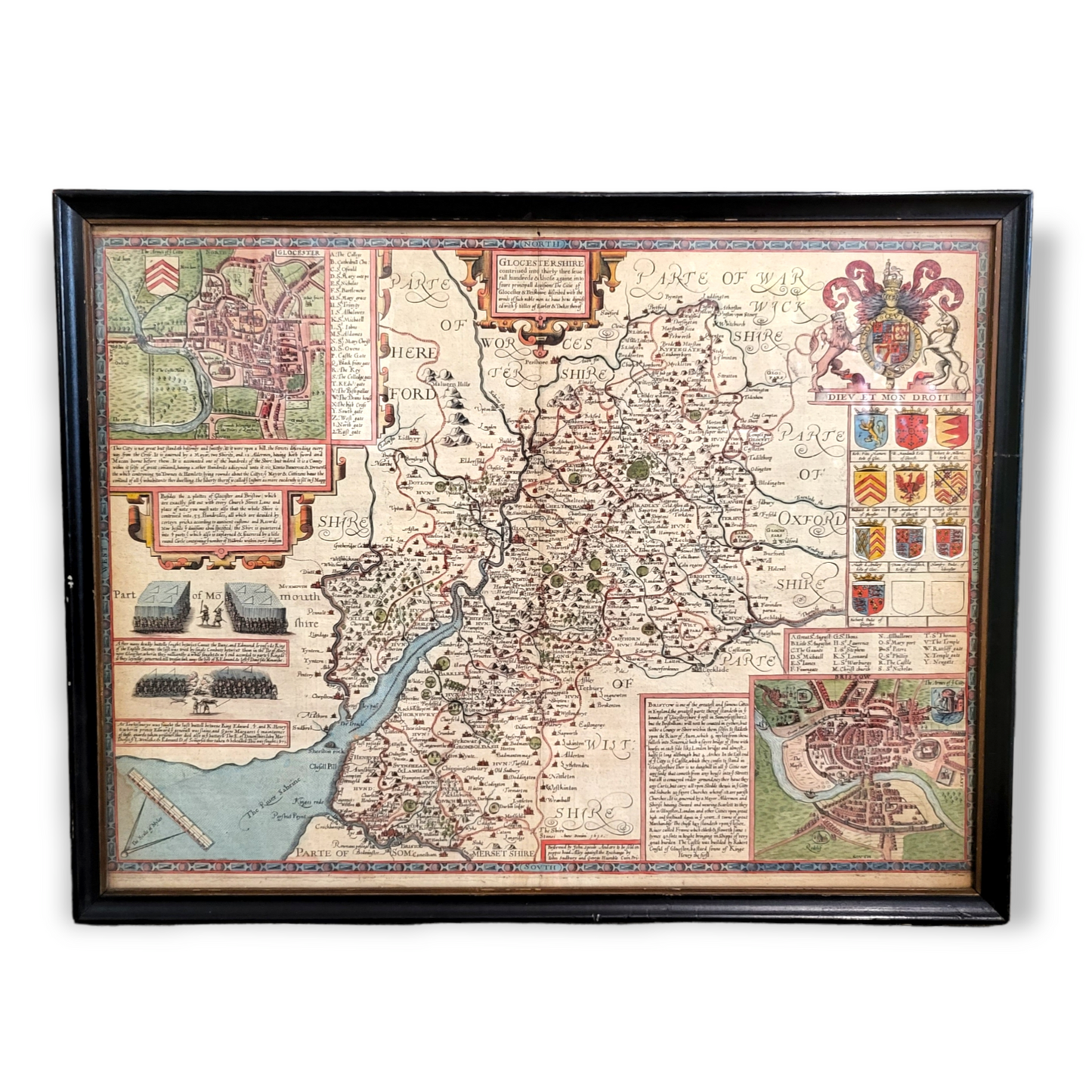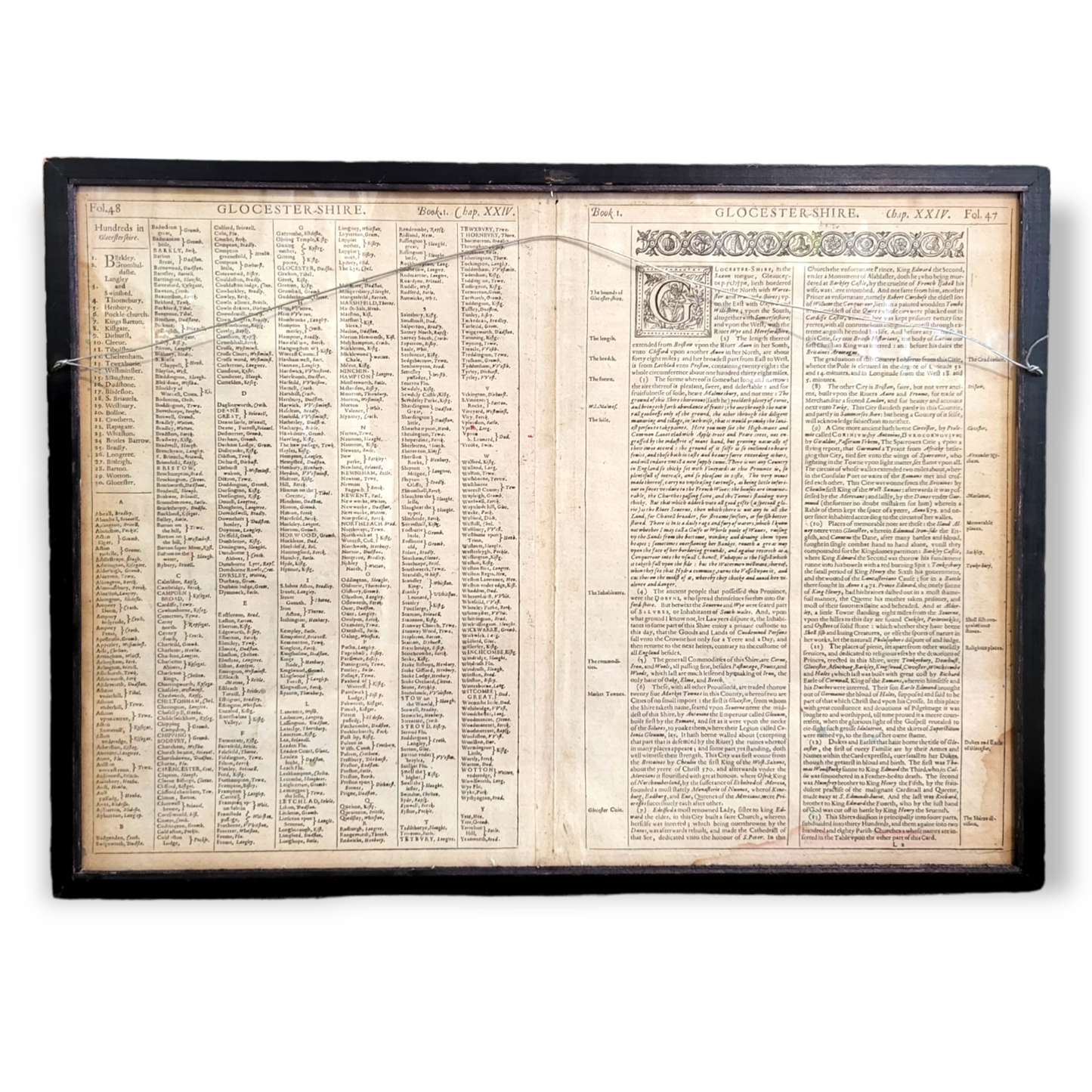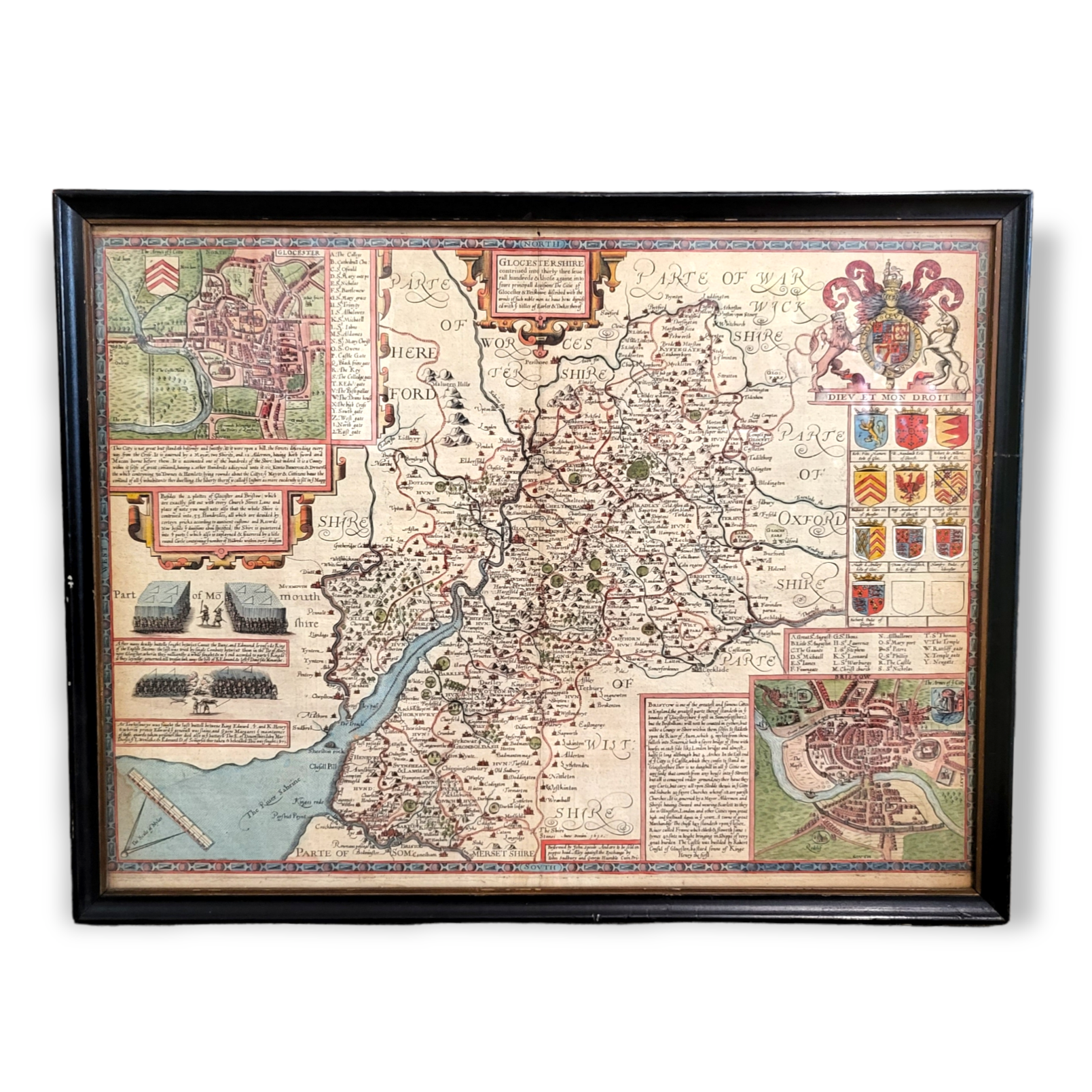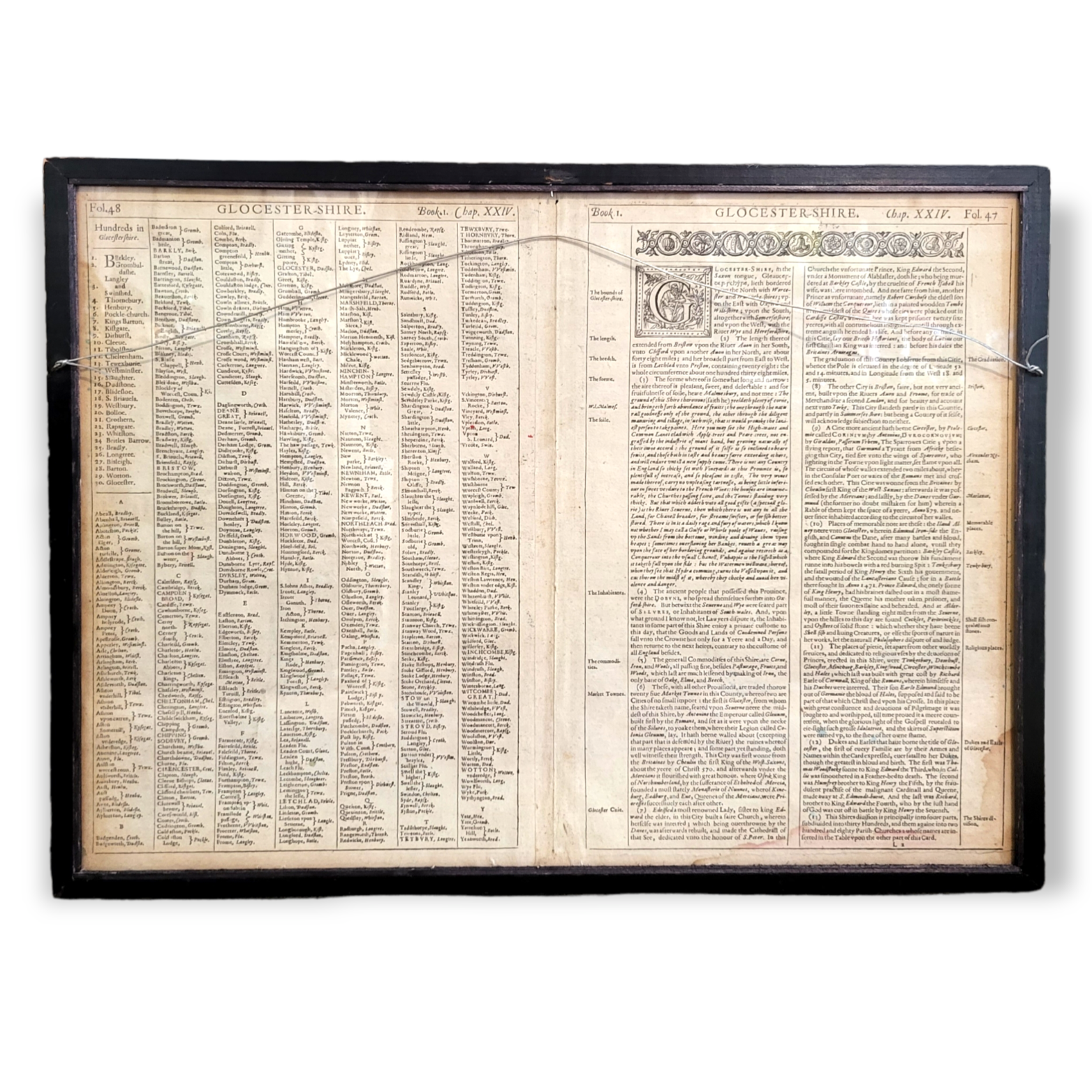Antique First Edition of John Speed's Map of Glocestershire - 1610
[Gloucestershire] Glocestershire, Anno 1610
Rare first edition of Speed’s map of Gloucestershire sold by John Sudbury and George Humble, with English text on the verso. One of the most sought after maps of Gloucestershire and usually found in much later editions.
Beautifully decorated map of Gloucestershire from John Speed’s monumental atlas of the British Empire. The royal crest of King James I is at top right corner, there are twelve armorial shields two of which are blank, these were filled in in later editions.
- Size (in frame) 17" tall X 21.5" wide
- Technique: Hand colored copper engraving
Mapmaker: John Speed (1552-1629)
Speed was born at Cheshire, and went into his father’s tailoring business. While working in London, his knowledge of history led him into learned circles and he came to the attention of Sir Fulke Greville, who subsequently made him an allowance to enable him to devote his whole attention to research. As a reward for his earlier efforts, Queen Elizabeth granted Speed the use of a room in the Custom House.
Speed began his Historie of Great Britaine, which was first published in 1611 and is an important record of the British towns depicted on his maps. In 1627 George Humble published the Prospect of the Most Famous Parts of the World, printed by John Dawson. This is the world map from this atlas with Speed’s name in the title, but not attributed to him. His atlas The Theatre of the Empire of Great Britaine was published in 1610-11, and contained the first series of individual county maps of England and Wales. It also included maps of Ireland and Scotland.
In 1627, two years before his death, Speed published Prospect of the Most Famous Parts of the World which was the first world atlas produced by an Englishman. Like his other publications Speed used the Dutch map engraver Jodocus Hondius to engrave the plates.
Speed’s maps rightly hold a premier place in the cartography of Britain, with their superb embellishments and fine engraving made at the height of the Golden Age of map making.
Couldn't load pickup availability




